
Candles are a popular and versatile product that can set the mood for any occasion, be it a romantic dinner, a relaxing bath, or a festive celebration.
Choosing the right candle container is crucial for not only the aesthetic appeal of the candle but also its safety and functionality.
In this article, we will explore the factors you should consider when choosing candle containers, popular trends in candle containers, and sustainable options for eco-conscious consumers.
If you’re a candle product manager or a candle DIYer, you’ve come to the perfect place! Get ready to light up your life with the perfect candle container!
Types of Candle Containers
Tin cans


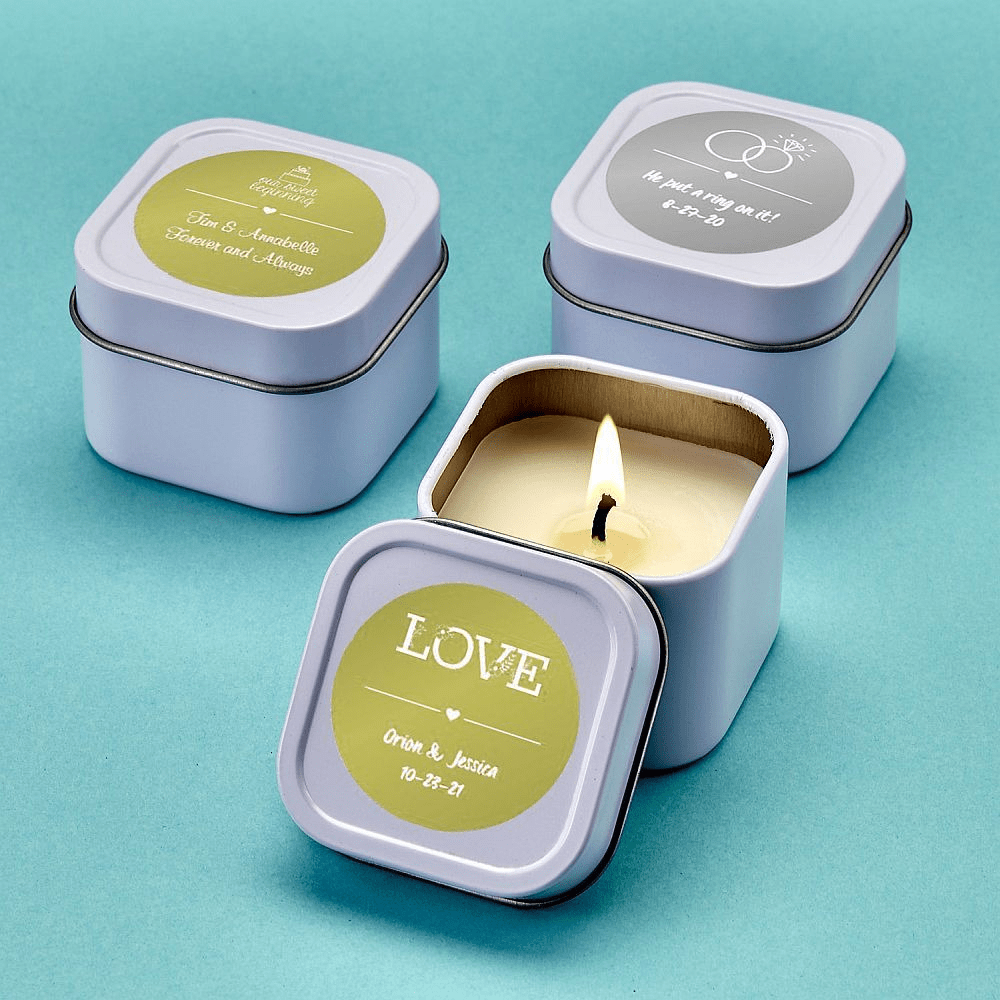
Tin cans are a popular choice for candle containers due to their affordability, durability, and versatility. They are commonly used in the candle-making industry and have a high usage rate.
Tin can manufacturers can produce candle tins to your specifications. Even if you don’t have a design, you can look through their styles for inspiration.
Advantages:
- Inexpensive
- Easy to customize
- Lightweight and portable
- Recyclable
- Durable
Disadvantages:
- Limited design options
- Prone to rust and corrosion
- Not heat-resistant
- Limited in terms of size and shape
Glass jars



Glass jars are a popular choice for candle containers due to their versatility, heat resistance, and aesthetic appeal. They offer several benefits for both candle makers and consumers, and their popularity is evident in the wide range of glass jar options available in the market.
Advantages:
- Offer transparency to show off the candle wax
- Wide range of design options
- Can be reused or recycled
- Heat-resistant
- Good scent retention
Disadvantages:
- Fragile and can break easily
- Limited in terms of customizability
- Can be expensive
Ceramic containers



Ceramic containers offer a unique and stylish option for candle containers. They offer several benefits for both candle makers and consumers, including heat resistance, scent retention, and reusability.
However, it’s important to note that ceramic containers can be more expensive than other types of containers, and they may not be as durable as some other options. Additionally, some ceramic containers may require special care and handling to prevent breakage or damage.
Advantages:
- Offer unique aesthetic appeal
- Heat-resistant
- Customizable
- Reusable
- Good scent retention
Disadvantages:
- Fragile and can break easily
- Limited design options
- Can be expensive
- Heavy and less portable
Concrete containers


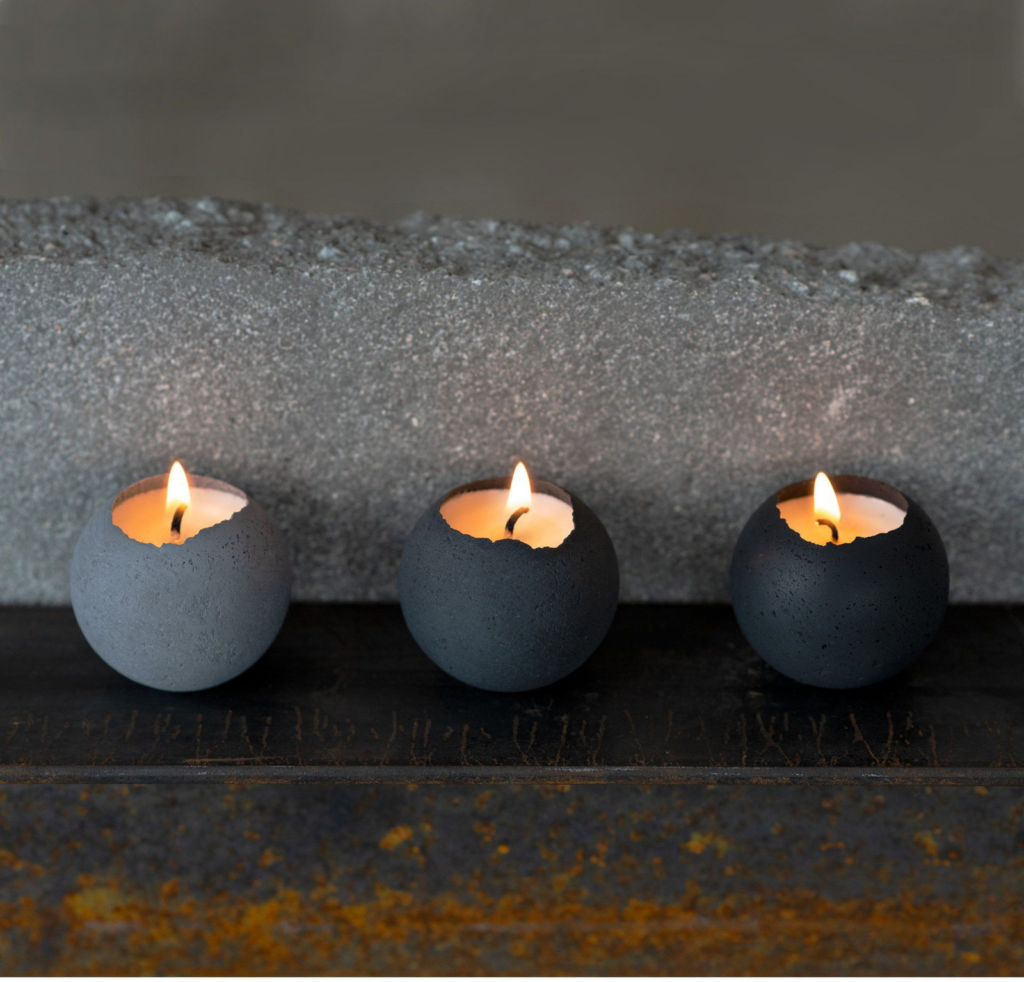
Concrete containers for candle containers are a rare choice. They offer several benefits for both candle makers and consumers, including sturdiness, reusability, and eco-friendliness. However, it’s important to note that concrete containers may not be as versatile or easy to work with as other types of containers, and they may require special care and handling to prevent breakage or damage.
Advantages:
- Unique aesthetic appeal
- Sturdy and durable
- Reusable
- Eco-friendly
- Good scent retention
Disadvantages:
- Heavy and less portable
- Limited design options
- Can be fragile and prone to chipping or cracking
- Can be porous and absorb the scent of the wax
Wooden containers


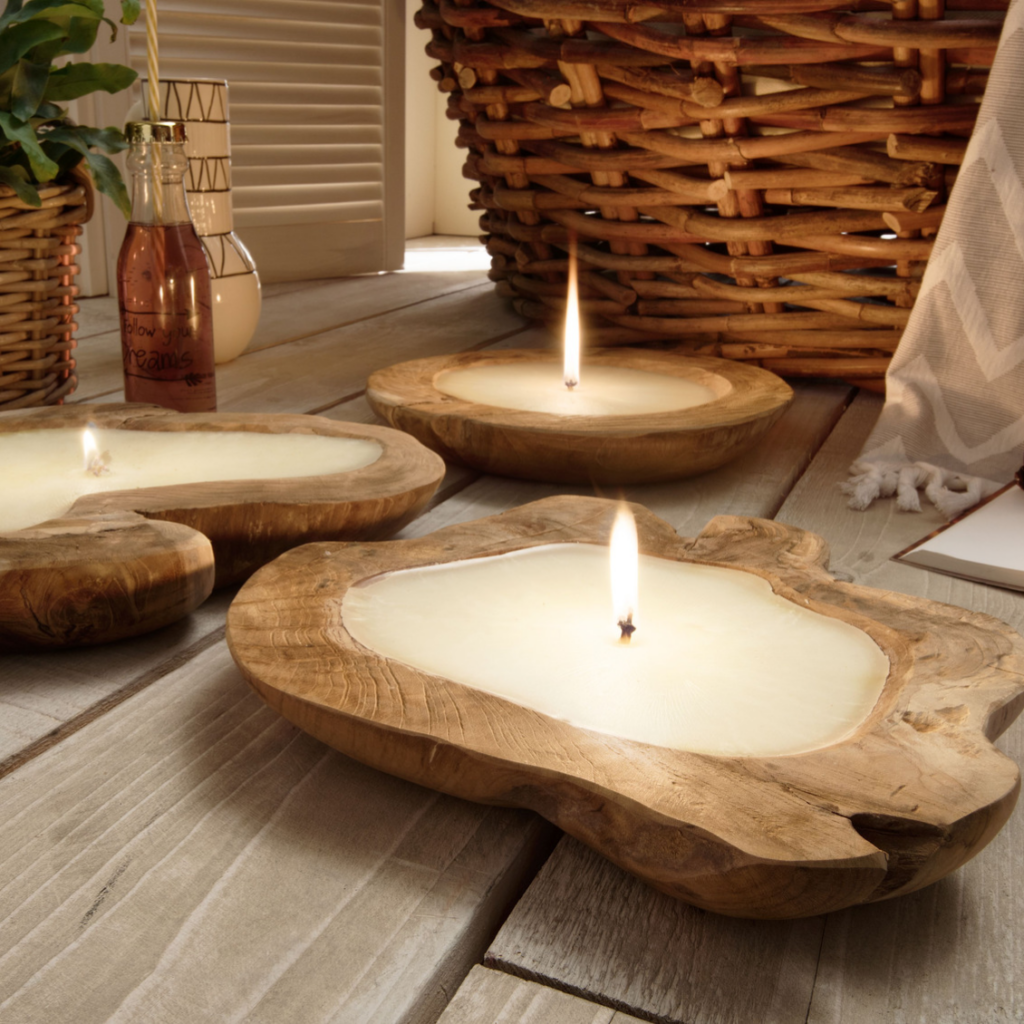
Wooden containers offer a unique and rustic look for candle jars, and they come with their own set of advantages and disadvantages. One of the main advantages of using wooden containers is their aesthetic appeal, which can add a touch of warmth and natural beauty to any room. They are also eco-friendly and biodegradable, making them an attractive option for those concerned about the environment. Wooden containers can be easily carved, engraved or painted, making them customizable for a variety of candle types. Additionally, they are versatile and can be used for a variety of purposes beyond candle-making.
Advantages:
- Aesthetically pleasing
- Eco-friendly
- Customizable
- Versatile
- Biodegradable
Disadvantages:
- Not heat-resistant
- Can warp or crack
- Limited design options
- Cannot be reused or recycled easily
- Can be expensive
Considerations When Choosing Candle Containers
Material of candle containers
In the preceding article, we classed candle containers based on their materials. Each one’s benefits and drawbacks are thoroughly discussed.
The table below provides an evaluation of five different types of candle containers—glass, metal, ceramic, concrete, and wood—across five aspects: cost effectiveness, reusability, appearance, heat insulation, and environmental friendliness. Each aspect is scored on a scale of 1 to 5, with 5 being the best.
| Material | Cost Effectiveness | Appearance | Reusability | Heat Insulation | Environmental Friendliness |
| Tins | 5 | 4 | 4 | 3 | 4 |
| Glass | 4 | 4 | 4 | 3 | 2 |
| Ceramic | 2 | 5 | 4 | 5 | 2 |
| Concrete | 2 | 3 | 3 | 5 | 2 |
| Wood | 2 | 5 | 3 | 3 | 5 |
Consider the properties of each material and how they align with your candle-making goals.
Size and shape
The size and shape of your candle container can affect the scent throw and burn time of your candle. A larger container will generally allow for a stronger scent, while a smaller container will offer a shorter burn time. The shape of the container can also affect how evenly the candle burns.
| Candle Type | Capacity (oz) | Weight (g) | Approximate Burn Time |
| Votive | 2 | 56 | 8-15 hours |
| Small Jar | 3.5-5 | 100-140 | 20-40 hours |
| Medium Jar | 8-10 | 225-280 | 40-70 hours |
| Large Jar | 16-20 | 450-565 | 80-120 hours |
Style and aesthetics
Appearance is the primary consideration when people choose candle containers. The style and aesthetics of your candle container can play a role in how it’s perceived by customers. Consider your branding and the overall look you want to achieve.

Visual appeal: An attractive container enhances the overall appearance of a candle, making it more visually appealing. This can influence a buyer’s decision to purchase the candle or select it as a gift.
Home decoration: Many people use candles as decorative items in their homes. A stylish and aesthetically pleasing container can complement the surrounding décor and create a pleasant ambiance.

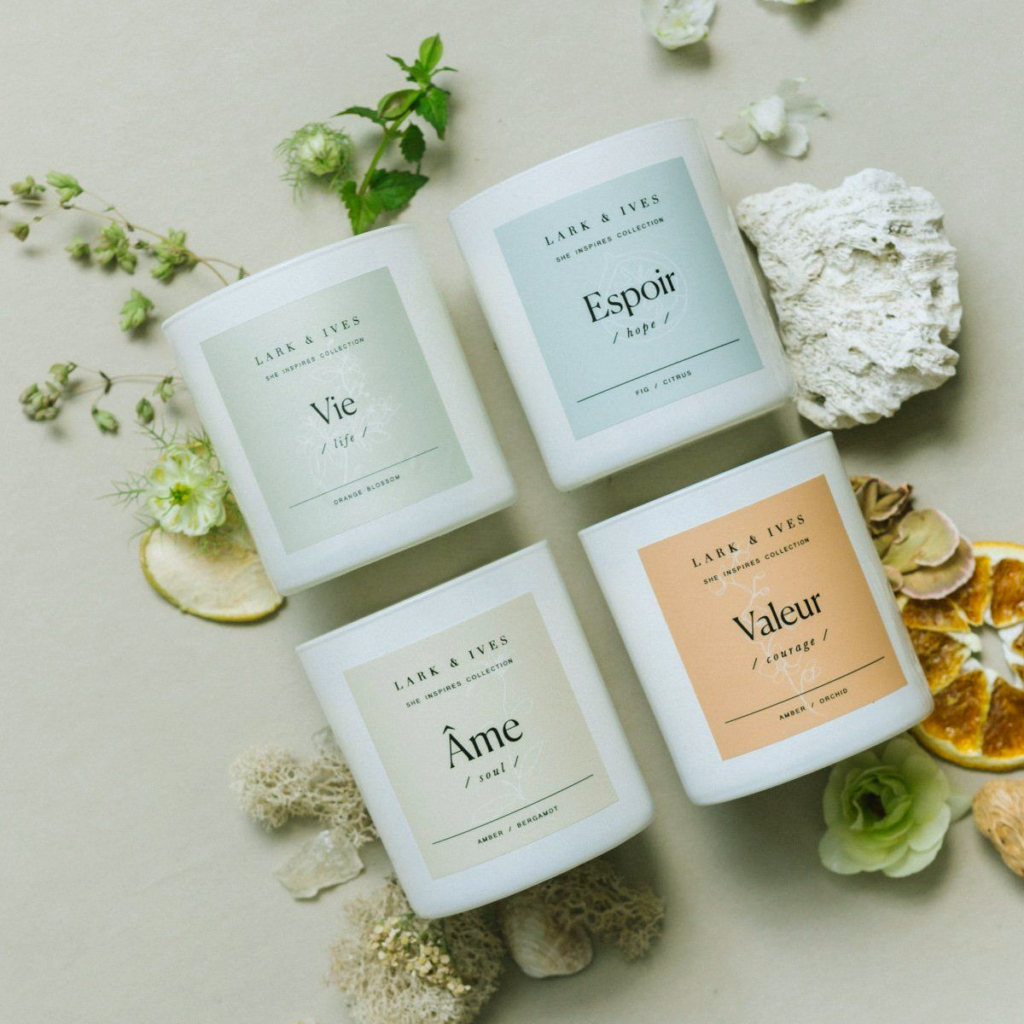
Branding and marketing: For candle makers, the container’s style and aesthetics play a crucial role in branding and marketing. A unique and eye-catching design can make their products stand out in a competitive market.
Emotional connection: A beautiful candle container can create a stronger emotional connection between the user and the product. This connection may lead to increased satisfaction and a higher likelihood of repurchasing or recommending the candle to others.

Cost of candle containers
The cost of your candle containers can impact your overall profit margin. The following nine points are important factors that affect the cost of candle containers.
1. Material: The type of material used for the container (glass, metal, ceramic, wood, or concrete) can have a significant impact on the cost. For instance, glass and metal containers are usually less expensive than ceramic or wooden ones.
2. Quality: The quality of the material and the manufacturing process can also affect the cost. High-quality materials and craftsmanship usually come at a higher price.
3. Design complexity: Intricate or custom designs, as well as unique shapes or finishes, can increase the cost of a container due to the additional labor and resources required for production.
4. Size: Larger containers typically cost more than smaller ones due to the increased amount of material needed and the potential for higher production complexity.
5. Quantity: The number of containers purchased can influence the cost per unit. Bulk orders often come with discounts, resulting in a lower price per container.
6. Branding: Custom branding, such as logos or labels, can add to the cost of the container, especially if specialized printing or etching techniques are involved.
7. Production location: The cost of labor and materials may vary depending on where the containers are manufactured. For example, containers produced in countries with lower labor costs might be more affordable than those made in countries with higher labor costs.
8. Shipping and logistics: The cost of shipping and handling containers can add to the overall price, particularly for international shipments or fragile materials that require special packaging.
9. Environmental factors: Eco-friendly materials or production methods may come at a higher cost due to increased demand, limited supply, or the use of specialized technologies.
Metal tins are generally cost-effective and can be purchased in bulk at lower prices, making them an attractive option for candle makers on a budget.
Be sure to compare prices from different suppliers and weigh the costs against the benefits of each option.
Safety
Safety is always a top priority when working with candles. Be sure to choose containers that are heat-resistant and won’t crack or shatter during use.
- Heat resistance: Choose a container made from a heat-resistant material, such as glass, ceramic, or metal. These materials can withstand the heat generated by a burning candle without cracking or breaking.
- Size and shape: Select a container with an appropriate size and shape for the candle you plan to use. The container should be large enough to hold the melted wax and should have a wide enough opening to allow air to circulate around the flame.
- Stability: The container should have a stable base to prevent it from tipping over easily. A flat, wide bottom is preferred for better stability and to minimize the risk of accidents.
- Heat insulation: Materials like glass and ceramic provide better heat insulation than metal or wood, which can become hot to the touch when the candle is burning. A container with good heat insulation can help prevent burns if accidentally touched.
- Flame protection: Some containers come with built-in features to protect the flame, such as a glass chimney or a cover that shields the flame from drafts. These features can help maintain a steady flame and reduce the risk of the candle being extinguished or causing a fire.
Sustainability
As more consumers become environmentally conscious, sustainability has become an important consideration for candle makers. Choose containers that are eco-friendly and can be easily recycled or repurposed.
Of the five materials mentioned for candle containers (glass, metal, ceramic, concrete, and wood), the most environmentally friendly in terms of biodegradability would be wood, while the most difficult to degrade would be glass and ceramic.

Metal containers, such as those made from aluminum or tinplate, are not biodegradable but are recyclable. Recycling metal containers can save energy and reduce the demand for raw materials. However, the mining and processing of metals can have negative environmental impacts.

Wood is a natural and renewable resource that can biodegrade and return to the earth over time. Wooden candle containers made from sustainably sourced wood or reclaimed wood are the most environmentally friendly options.

Glass is made from natural materials like sand, soda ash, and limestone. However, it is not biodegradable and takes a very long time to break down in the environment. On the positive side, glass is highly recyclable, and recycling reduces the need for raw materials and energy consumption.

Ceramic is also made from natural materials, but it is not biodegradable and takes a long time to break down. Ceramic containers can be challenging to recycle, depending on the composition and glazing used. However, they can be repurposed for other uses once the candle has burned down.
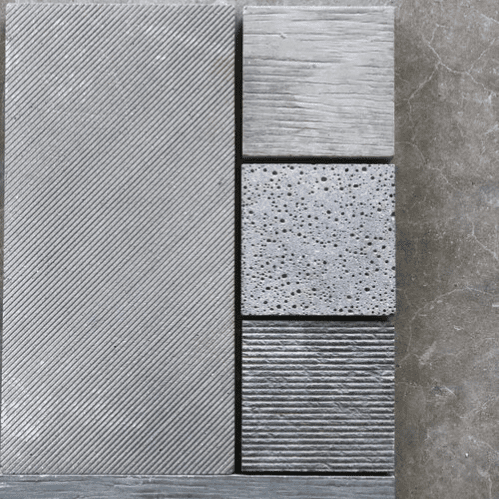
Concrete is not biodegradable and is slow to break down in the environment. Recycling and repurposing concrete can be difficult, depending on the size and composition of the container. The production of concrete also has a significant environmental impact, as it requires large amounts of energy and releases CO2 during the process.
Popular Candle Container Trends
Candle container trends are constantly evolving as consumers seek new and innovative designs that complement their home decor and personal style. Here are some popular candle container trends:
Minimalist and modern designs



Simple, clean lines and shapes are popular for those who prefer a minimalist aesthetic. Containers with monochromatic color schemes, matte finishes, or geometric shapes fit well into this trend.
The minimalist design philosophy is centered around the idea that “less is more,” focusing on functionality, simplicity, and the use of negative space to create a harmonious and balanced atmosphere.
The popularity of minimalist containers can be attributed to their ability to create a sense of calm and tranquility in a space. By focusing on simplicity, functionality, and high-quality materials, these containers provide an aesthetically pleasing yet practical solution for those who appreciate a minimalist design style.
Vintage-inspired containers



Vintage-style candle containers, such as those resembling antique glassware, apothecary jars, or tin cans, offer a nostalgic charm that many consumers find appealing.
The appeal of vintage-style containers lies in their ability to transport us to a bygone era, conjuring up memories and emotions from the past. The craftsmanship, intricate details, and patina of these containers often tell a story that resonates with consumers who enjoy the character and warmth that vintage items bring to their living spaces.
Bold colors and patterns



Eye-catching colors and patterns can make a candle container stand out and serve as a statement piece in a room. Containers with vibrant hues, metallic finishes, or striking patterns are on-trend.
Indeed, eye-catching colors and patterns can make a candle container stand out and serve as a statement piece in a room. Containers with vibrant hues, metallic finishes, or striking patterns are on-trend and can appeal to consumers who want to add a touch of style and personality to their living spaces.
Upcycled and repurposed containers



Sustainability is increasingly important to consumers, and using upcycled or repurposed candle containers, such as mason jars, wine bottles, or teacups, is a popular and eco-friendly trend.
Custom and personalized candle containers



Customized containers, featuring personal messages, monograms, or unique designs, are popular as gifts or for special occasions.
Create custom labels with unique designs, messages, or monograms that can be applied to containers. This is a cost-effective and flexible option that allows you to personalize any type of container without investing in custom manufacturing.
Luxurious and high-end materials



Premium materials such as crystal, marble, and high-quality ceramics can significantly elevate the appearance of candle containers and appeal to consumers seeking luxury in their home decor. These materials convey a sense of opulence, exclusivity, and sophistication, which many consumers find appealing.
Eco-friendly packaging
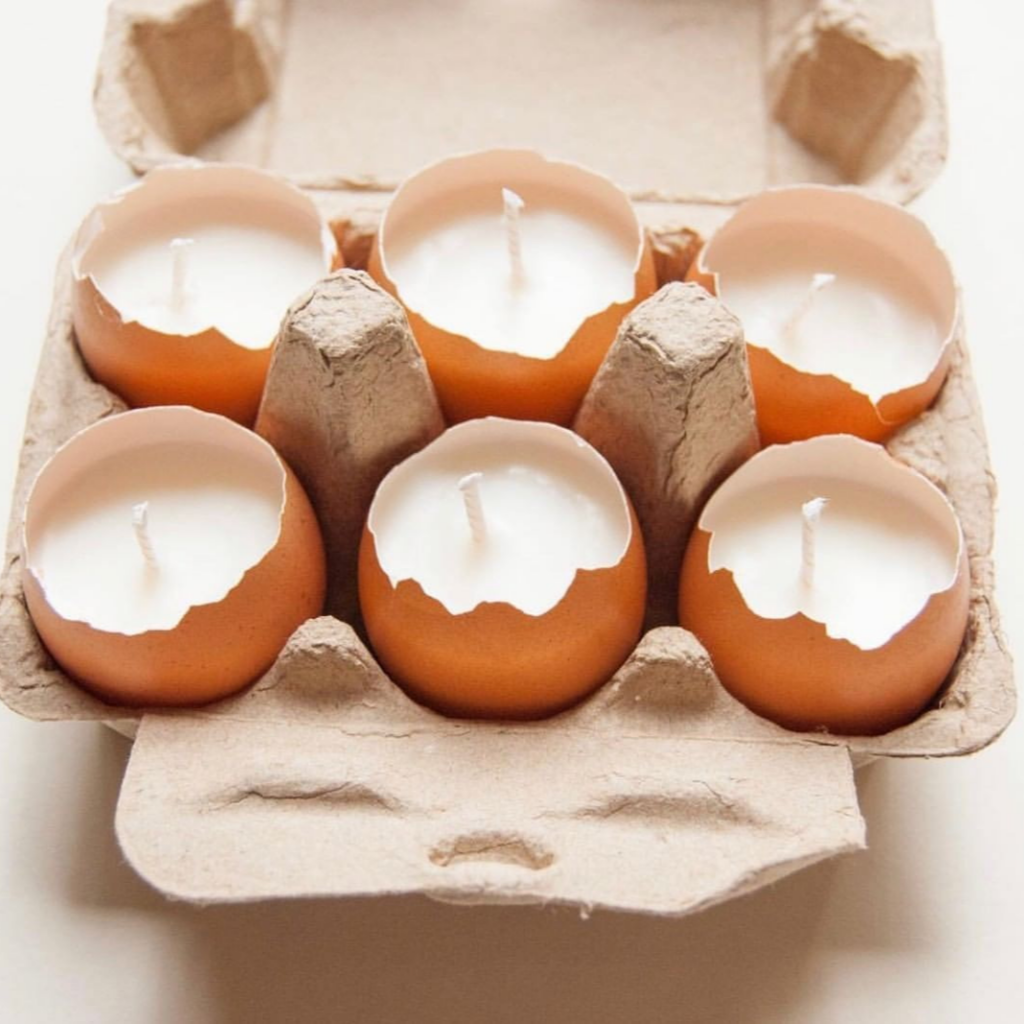


Consumers are increasingly looking for environmentally friendly options, and containers made from recycled or sustainable materials, as well as minimal or biodegradable packaging, are gaining popularity. Eggs, cocoa nuts and conch can all be candle containers.
Conclusion
In conclusion, choosing the right candle container is a vital aspect of enjoying the ambiance and allure of candles in your home. We hope this article provided valuable insights into the factors to consider and the current trends in the world of candle containers.
We’d love to hear your thoughts and experiences in selecting the perfect candle container. Have you discovered a unique or favorite style? Share your thoughts and tips in the comments below, and let’s continue the conversation!






